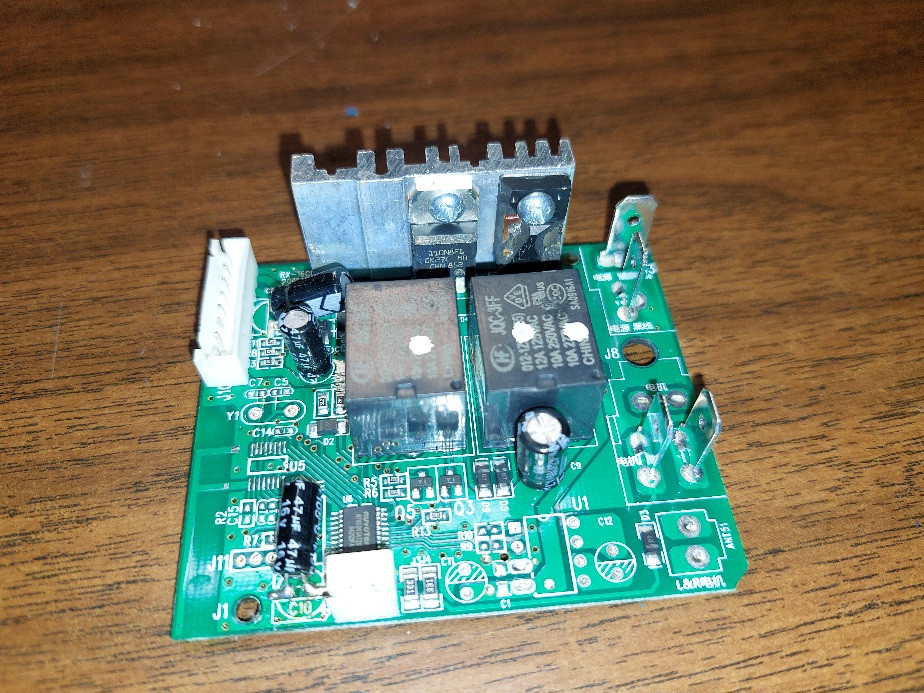Looks like remnants of a Diodes, Inc. logo, something -1020-, and a common-cathode dual rectifier. Package is TO-220FP. Perusing likely suspects, this may be it:
SBR10200CT–SBR10200CTFP Datasheet | Diodes, Inc.
Compare the photo here,

From: 5PCS New (SBR10200CTFP TO-220F 10A220V) #A6-4 | eBay
Given the description and appearance, it seems likely this is a buck converter, and the only reason the diode should fail is due to overheating. The heatsink isn't very substantial, so that is a possibility; but the mode of failure (both dies blown to h*ck) can only be propelled by fault current. I can conclude the transistor is dead as well, and perhaps by extension, drive circuitry.
I would need a clear, square photo of both sides of the board (probably with major components removed besides) to conclude what the full circuit/layout is, but it looks like the two terminals beside the heatsink are power / battery, and the pair midway along the side are the motor terminals; two SPDT relays provide reversing function, and the buck converter is low-side common, bucking towards +V (which is fine as the motor is a floating load). Notably there is no bypass capacitor (or at least one large enough to handle switching an ATV's motor) near the battery terminals, so the switching cannot be too fast, or the battery cable too long; and I don't see any current sensing, and temperature sensing is highly unlikely, so the controller (U6 is probably a microcontroller, probably set up to run PWM into the transistor, with some input levels, switching or other communcations from the header connector, and no further controls or limits) cannot protect the circuit against over-current or over-temperature conditions.
I would recommend replacing the board with a new one. Possibly, the drive circuitry is okay and replacement diode and transistor will get it going again, but it looks so cheap, it's honestly not worth the effort.
Going up in ratings should be fine; anything 200V, 15-40A rated, schottky or fast-recovery, should do for the diode, and same or lower Rds(on), Qg(tot), and same or higher Vds(max) for the transistor. Voltage ratings must be at least the battery rating plus a safety margin (typically 20-50%), but it's possible they used the extra voltage rating to cheat around the bypass capacitor, and so additional rating is required as-is.





